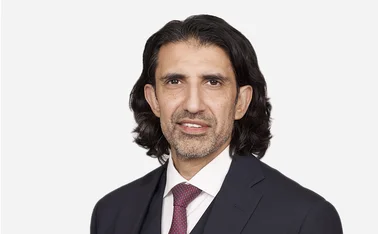
Blog: Stepping up the fight against fraud

Need to know
- Contact centre-related fraud is now truly ubiquitous affecting mobile phone claims, account liquidation and policy surrenders
- Identification technology could be the key to helping insurers combat fraud
- Developments in biometrics and AI are also poised to assist insurers in the future
Arguably, the insurance sector is behind many other verticals in transforming customer engagement and achieving the nirvana of delivering an excellent customer experience.
Juxtaposed to this goal is the constant requirement to manage data security and combat fraud. These uncomfortable bedfellows need to be addressed by insurers while plugging the leaks created by criminal opportunists - and it isn't easy.
In many ways, the contact centre represents the perfect storm for would-be fraudsters looking to breach system security. On one hand, we have contact centre agents who must deal with high workloads using the tools they have available to them. On the other hand, we have smart, determined fraudsters who are well versed in exploiting system vulnerabilities.
This is not an isolated problem for insurers as contact centre-related fraud is now truly ubiquitous affecting many areas such as mobile phone claims, account liquidation and policy surrenders. For example, last year UK telecoms company Three experienced a massive data breach when hackers accessed its database using stolen employee information, perhaps through a scam email. The question is how best to tackle this pernicious problem.
Probably the greatest challenge to combatting fraudsters is tackling who people really are. Or more accurately, whether or not they are who they say they are. Thankfully, identification technology can assist in this quest, acting as a gatekeeper.
Customer engagement
This essential task has a dual benefit to insurers. First, it addresses customer authentication. Second, it can potentially speed the process of customer engagement and, as a result, improve the customer journey. However, the process of identifying customers is not achieved through a set of common standards.
For example, the use of interactive voice response to allow the customer to input security information such as account details and date of birth using dual tone multi frequency technology or speech has been widely used yet it is still rudimentary in function. What's more, this technology is often used in isolation relative to other contact centre applications.
Then there are the inane triage ‘security' questions such as first pet and mother's maiden name. This data is the fraudster's bread and butter and can be obtained with a little research, guess work and repetition. Clearly, a more consistent or sophisticated approach is required to keep ahead of the villains.
The use of more intelligent IVRs, recording applications, speech analytics and more in-depth customer profiling will certainly help to combat fraud. Connecting all your customer-related data sources and presenting relevant information in a single application will also empower the contact centre agent to draw quick conclusions if something isn't quite right.
Developments in pioneering technology are also breaking new ground, including the topic of biometrics and artificial intelligence.
Humans are unique individuals and, as such, display patterns that can be recorded, analysed and identified. From voice signatures to retinal images, our DNA gives our real identification away. While investment in this sort of technology doesn't come cheap, neither does the pain of being defrauded. What is apparent is that insurance companies need to raise their game because fraudsters are not going away.
Only users who have a paid subscription or are part of a corporate subscription are able to print or copy content.
To access these options, along with all other subscription benefits, please contact info@postonline.co.uk or view our subscription options here: http://subscriptions.postonline.co.uk/subscribe
You are currently unable to print this content. Please contact info@postonline.co.uk to find out more.
You are currently unable to copy this content. Please contact info@postonline.co.uk to find out more.
Copyright Infopro Digital Limited. All rights reserved.
As outlined in our terms and conditions, https://www.infopro-digital.com/terms-and-conditions/subscriptions/ (point 2.4), printing is limited to a single copy.
If you would like to purchase additional rights please email info@postonline.co.uk
Copyright Infopro Digital Limited. All rights reserved.
You may share this content using our article tools. As outlined in our terms and conditions, https://www.infopro-digital.com/terms-and-conditions/subscriptions/ (clause 2.4), an Authorised User may only make one copy of the materials for their own personal use. You must also comply with the restrictions in clause 2.5.
If you would like to purchase additional rights please email info@postonline.co.uk








